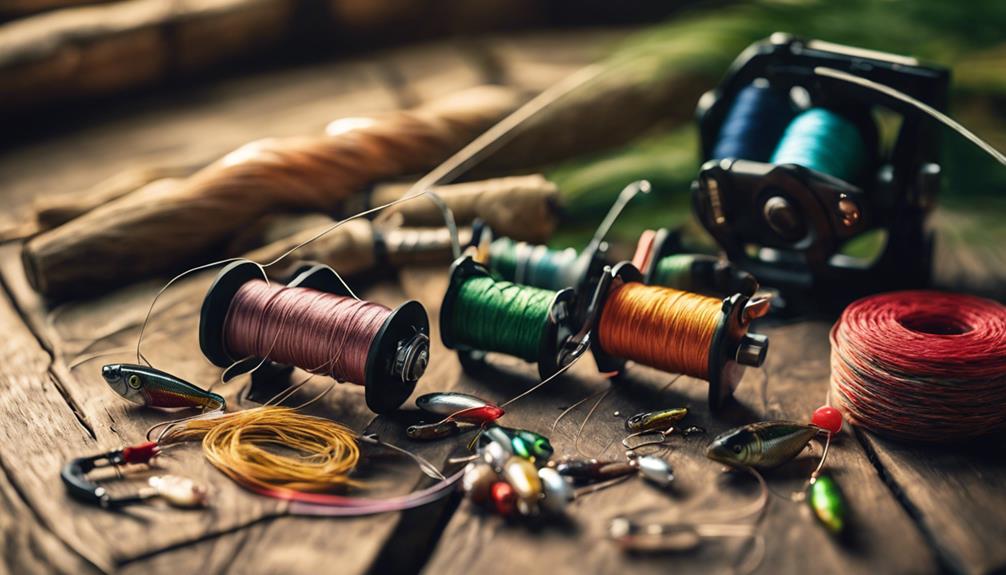Fly fishing is an art that combines skill, patience, and the right equipment to catch fish in a serene environment. One of the most critical components of fly fishing is the line. Choosing the right line for fly fishing can significantly enhance your experience and increase your chances of making a successful catch. In this detailed guide, we will explore the various types of fly lines available, their characteristics, and how to choose the best line for your fly fishing adventures.
Understanding the Different Types of Fly Fishing Lines
When it comes to fly fishing, understanding the different types of lines available is essential. The three main categories include floating lines, sinking lines, and intermediate lines. Floating lines are ideal for most surface fishing situations, allowing you to present your flies on the water’s surface effectively. Sinking lines, on the other hand, are designed to sink quickly, making them perfect for targeting fish that dwell deeper in the water. Intermediate lines fall somewhere in between, sinking gradually to help you cover various depths. Familiarizing yourself with these types will help you choose the right line for your specific fishing conditions.
Choosing the Right Weight for Your Fly Line
Fly lines come in various weights, and selecting the right weight is crucial for effective casting and presentation. The weight of the line should match the weight of your rod and the type of flies you plan to use. A heavier line will cast larger flies and handle wind better, while a lighter line is better suited for delicate presentations with smaller flies. To determine the appropriate weight, refer to the manufacturer’s specifications and consider the conditions you will be fishing in. This ensures that your line will perform optimally, enhancing your overall fly fishing experience.
Understanding Fly Line Tapers: Why They Matter
Fly line tapers influence how the line behaves during casting and presentation. There are several types of tapers, including weight-forward (WF), double taper (DT), and level taper lines. Weight-forward lines are popular for their versatility, featuring a heavier front section that aids in casting longer distances. Double taper lines offer a more delicate presentation and are excellent for small streams. Level taper lines maintain a consistent diameter and are less common but can be useful in specific situations. Understanding these taper types will help you select the best line for your fly fishing needs.
Material Matters: Choosing Between PVC and Polyurethane Fly Lines
The material of your fly line can significantly impact its performance. Most fly lines are made of either PVC or polyurethane. PVC lines are more affordable and provide good durability for beginner anglers. However, they may lack the flexibility and sensitivity of polyurethane lines. Polyurethane lines offer better performance in varying temperatures and are more resistant to cracking and memory. While they come at a higher price point, the benefits they provide may be worth the investment, especially for serious anglers. Evaluating your budget and fishing style will help you decide which material is best for you.
Line Color: How It Affects Visibility and Presentation
The color of your fly line can influence its visibility both to you and the fish. Brightly colored lines are easier for anglers to see, aiding in tracking casts and detecting bites. However, fish may be wary of visible lines, especially in clear water. To mitigate this, many anglers opt for lines with a clear or subdued color for the tip and a more visible color for the running line. This allows for better tracking while minimizing the chances of spooking fish. Consider the water conditions and the species you are targeting when selecting the color of your fly line.
Maintaining Your Fly Line for Longevity
Taking care of your fly line is essential for maintaining its performance and extending its lifespan. Regular cleaning is crucial, as dirt and grime can affect casting ability and overall performance. Use a specialized fly line cleaner and a soft cloth to wipe down your line after each fishing session. Additionally, store your line properly by keeping it coiled and out of direct sunlight. Avoid leaving it on the reel for extended periods, as this can cause memory issues. By following these maintenance tips, you can ensure that your fly line remains in top condition for many fishing adventures to come.
Conclusion: Making the Right Choice for Your Fly Fishing Adventures
Choosing the best line for fly fishing is a decision that can significantly impact your success on the water. By understanding the different types of lines, weights, tapers, materials, colors, and maintenance practices, you can make an informed choice that enhances your fishing experience. Whether you are a beginner or a seasoned angler, taking the time to select the right line will improve your casting, presentation, and ultimately, your catch rate. Embrace the journey of fly fishing, and remember that the right line can make all the difference in your fishing adventures. Happy casting!
By following this comprehensive guide, you now have the knowledge you need to select the best line for fly fishing tailored to your unique needs and preferences. Armed with this information, you can head out to your favorite fishing spot with confidence, knowing that you are fully equipped for success.
